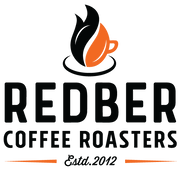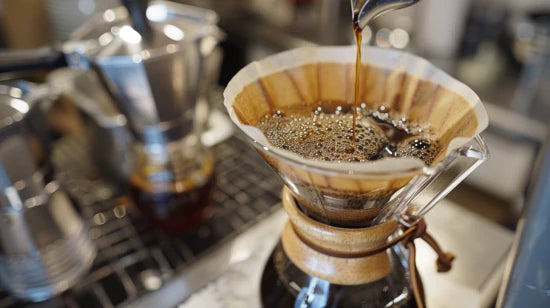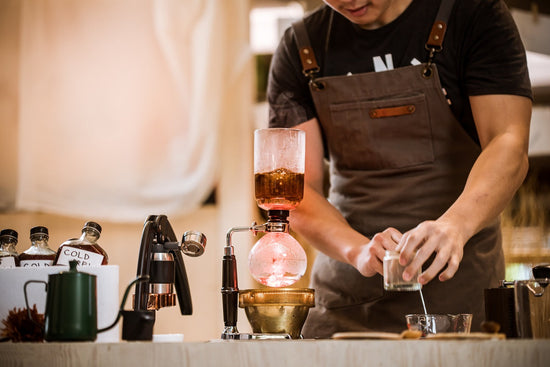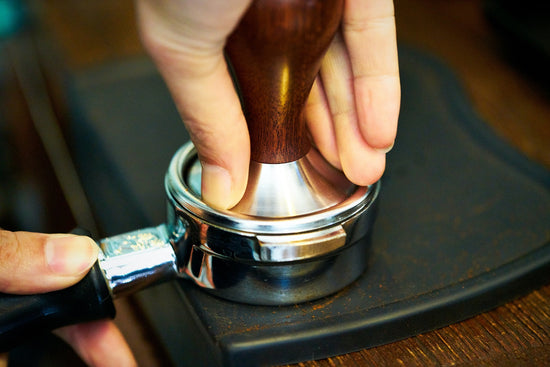The Alchemy of Brewing Coffee: Unveiling the Ideal Temperature
For coffee aficionados, the quest for the perfect cup is a never-ending exploration. We meticulously source our beans, delve into the intricacies of grind size, and experiment with brewing methods. Yet, there's one often-overlooked factor that wields immense power over the final brew: brewing coffee temperature .
The Science of Extraction: How Temperature Shapes Your Coffee
Imagine brewing coffee as a delicate dance between water and grounds. Hot water acts as a solvent, coaxing out the flavorful compounds locked within the coffee. Temperature directly influences the speed and efficiency of this extraction. Brewing with scorching water can lead to over-extraction , resulting in a bitter and unpleasant cup. Conversely, using lukewarm water results in under-extraction , leaving you with a weak and underwhelming brew.

The Sweet Spot: Finding Balance Between 195°F and 205°F
The National Coffee Association and countless coffee professionals recommend a brewing coffee temperature range of 195°F (90°C) to 205°F (96°C) . This sweet spot ensures optimal extraction, leading to a balanced and flavorful cup. But is there a single "correct" temperature? The answer, like a truly exquisite cup of coffee, is a bit more nuanced.
The Roast Factor: Fine-Tuning for Light or Dark Beans
The type of roast you choose significantly impacts the ideal brewing temperature. Lighter roasts are denser and boast a more complex flavor profile. To fully unlock these complexities, a slightly higher temperature (around 205°F) can be beneficial, allowing for a more thorough extraction of those delicate flavors.
Dark roasts , on the other hand, are less dense and have a bolder flavor. They're more susceptible to becoming bitter if brewed with excessively hot water. Opt for a lower temperature (around 195°F) to achieve a smooth and balanced cup.

"I love my coffee ice coldara, WHAT?"
Beyond the Basics: Brewing Methods and Temperature Considerations
While the 195°F-205°F range serves as an excellent starting point, some brewing methods might require slight adjustments for optimal results. Here's why:
- Pour-over methods like the Hario V60 rely on slower, more controlled pours, allowing for longer contact time between water and grounds. To compensate for this extended brewing time, you can bump up the temperature to the higher end of the range (200°F-205°F) .
- Pressurized brewing methods like the AeroPress or an espresso machine extract coffee more quickly due to the pressure involved. To avoid over-extraction and bitterness, aim for the lower end of the temperature range (195°F-200°F) .

Redber Pro-Tip: Embrace Experimentation to Personalize Your Cup
At Redber Coffee, we believe the perfect cup is ultimately the one that brings you the most joy. While science provides valuable guidelines, your taste buds are the final judge. Don't hesitate to experiment within the recommended temperature range when brewing coffee.
Start with the middle ground (200°F) and adjust based on your roast selection and brewing method. If your coffee tastes bitter, try lowering the temperature in 5°F increments. If your brew lacks depth and comes across as weak, raise the temperature slightly.

Invest in a Gooseneck Kettle: The Key to Temperature Control Mastery
Achieving consistent brewing coffee temperature is a cornerstone of brewing mastery. A gooseneck kettle allows for a slow, controlled pour, ensuring even saturation of the coffee grounds for optimal extraction. Many gooseneck kettles even come with built-in thermometers, making temperature control even more convenient.
Redber offers a curated selection of gooseneck kettles to suit your needs and budget. From sleek, minimalist designs to kettles with variable temperature settings, we have the perfect tool to elevate your brewing coffee experience.

The Final Sip: A Symphony of Factors in Harmony
Remember, temperature is just one piece of the puzzle when it comes to brewing coffee. Grind size, water quality, bean freshness, and brewing method all contribute significantly to the final cup. But by mastering the art of temperature control, you'll unlock a whole new level of flavor and enjoyment in your daily cup of Redber Coffee.
Products Featured In This Blog
Frequently Asked Questions
1. What's the ideal temperature for brewing coffee?
- The generally recommended brewing coffee temperature range is 195°F (90°C) to 205°F (96°C) . This ensures optimal extraction for a balanced and flavorful cup.
2. Is there a single "correct" temperature?
- Not quite. The ideal temperature can vary slightly depending on the roast of your coffee beans and your brewing method.
3. How does roast impact temperature?
- Lighter roasts: Denser with a complex flavor profile. Use a slightly higher temperature (around 205°F) for better extraction.
- Darker roasts: Less dense with a bolder flavor. Use a lower temperature (around 195°F) to avoid bitterness.
4. How does brewing method affect temperature?
- Pour-over methods (Hario V60): Slower brewing time. Consider a higher temperature (200°F-205°F) to compensate.
- Pressurized methods (AeroPress, espresso): Faster extraction. Use a lower temperature (195°F-200°F) to prevent over-extraction.




